Here are some events that happened on July 2nd. It could be an event or a person that died or was born on that day
1778 Died: Jean-Jacques Rousseau, Swiss philosopher and polymath (b. 1712)
Jean-Jacques Rousseau (28 June 1712 – 2 July 1778) was a Genevan philosopher, writer, and composer. His political philosophy influenced the progress of the Enlightenment throughout Europe, as well as aspects of the French Revolution and the development of modern political, economic, and educational thought.
His Discourse on Inequality and The Social Contract are cornerstones in modern political and social thought. Rousseau's sentimental novel Julie, or the New Heloise (1761) was important to the development of preromanticism and romanticism in fiction. His Emile, or On Education (1762) is an educational treatise on the place of the individual in society. Rousseau's autobiographical writings—the posthumously published Confessions (composed in 1769), which initiated the modern autobiography, and the unfinished Reveries of the Solitary Walker (composed 1776–1778)—exemplified the late-18th-century "Age of Sensibility", and featured an increased focus on subjectivity and introspection that later characterized modern writing.
Rousseau befriended fellow philosopher Denis Diderot in 1742, and would later write about Diderot's romantic troubles in his Confessions. During the period of the French Revolution, Rousseau was the most popular of the philosophers among members of the Jacobin Club. He was interred as a national hero in the Panthéon in Paris, in 1794, 16 years after his death.
Swiss and Russian stamps depicting Jean-Jacques Rousseau
1823 – Bahia Independence Day: The end of Portuguese rule in Brazil, with the final defeat of the Portuguese crown loyalists in the province of Bahia.
The Siege of Salvador occurred during the Brazilian War of Independence, during which the Brazilian Army, under Pierre Labatut, attempted to capture the city of Salvador in Bahia from its Portuguese Army defenders. The siege lasted from 2 March 1822 until 2 July 1823, finally ending when the Portuguese commander, Inácio Luís Madeira de Melo, surrendered his forces to the Brazilians
Brazilian stamp commemorating the capture of Bahia
1871 – Victor Emmanuel II of Italy enters Rome after having conquered it from the Papal States.
Victor Emmanuel II (Italian: Vittorio Emanuele II; full name: Vittorio Emanuele Maria Alberto Eugenio Ferdinando Tommaso di Savoia; 14 March 1820 – 9 January 1878) was King of Sardinia from 1849 until 17 March 1861. At that point, he assumed the title of King of Italy and became the first king of a united Italy since the 6th century, a title he held until his death in 1878. The Italians gave him the epithet of Father of the Fatherland (Italian: Padre della Patria). The monument Altare della Patria (or Vittoriano) in Rome was built in his honor.
Italian stamps depicting Victor Emmanuel II


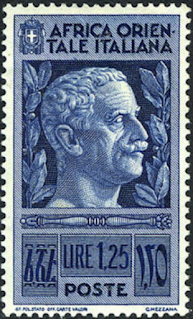
1877 Born: Hermann Hesse, German-born Swiss poet, novelist, and painter, Nobel Prize laureate (d. 1962 )
Hermann Karl Hesse (2 July 1877 – 9 August 1962) was a German-born Swiss poet, novelist, and painter. His best-known works include Demian, Steppenwolf, Siddhartha, and The Glass Bead Game, each of which explores an individual's search for authenticity, self-knowledge and spirituality. In 1946, he received the Nobel Prize in Literature.
In his time, Hesse was a popular and influential author in the German-speaking world; worldwide fame only came later. Hesse's first great novel, Peter Camenzind, was received enthusiastically by young Germans desiring a different and more "natural" way of life in this time of great economic and technological progress in the country. Demian had a strong and enduring influence on the generation returning home from the First World War. Similarly, The Glass Bead Game, with its disciplined intellectual world of Castalia and the powers of meditation and humanity, captivated Germans' longing for a new order amid the chaos of a broken nation following the loss in the Second World War.
Towards the end of his life, German (born Bavarian) composer Richard Strauss (1864–1949) set three of Hesse's poems to music in his song cycle Four Last Songs for soprano and orchestra (composed 1948, first performed posthumously in 1950): "Frühling" ("Spring"), "September", and "Beim Schlafengehen" ("On Going to Sleep").
In the 1950s, Hesse's popularity began to wane, while literature critics and intellectuals turned their attention to other subjects. In 1955, the sales of Hesse's books by his publisher Suhrkamp reached an all-time low. However, after Hesse's death in 1962, posthumously published writings, including letters and previously unknown pieces of prose, contributed to a new level of understanding and appreciation of his works.
By the time of Hesse's death in 1962, his works were still relatively little read in the United States, despite his status as a Nobel laureate. A memorial published in The New York Times went so far as to claim that Hesse's works were largely "inaccessible" to American readers. The situation changed in the mid-1960s, when Hesse's works suddenly became bestsellers in the United States. The revival in popularity of Hesse's works has been credited to their association with some of the popular themes of the 1960s counterculture (or hippie) movement. In particular, the quest-for-enlightenment theme of Siddhartha, Journey to the East, and Narcissus and Goldmund resonated with those espousing counter-cultural ideals. The "magic theatre" sequences in Steppenwolf were interpreted by some as drug-induced psychedelia although there is no evidence that Hesse ever took psychedelic drugs or recommended their use. To a large part, the Hesse boom in the United States can be traced back to enthusiastic writings by two influential counter-culture figures: Colin Wilson and Timothy Leary. From the United States, the Hesse renaissance spread to other parts of the world and even back to Germany: more than 800,000 copies were sold in the German-speaking world from 1972 to 1973. In a space of just a few years, Hesse became the most widely read and translated European author of the 20th century. Hesse was especially popular among young readers, a tendency which continues today.
There is a quote from Demian on the cover of Santana's 1970 album Abraxas, revealing the source of the album's title.
Hesse's Siddhartha is one of the most popular Western novels set in India. An authorised translation of Siddhartha was published in the Malayalam language in 1990, the language that surrounded Hesse's grandfather, Hermann Gundert, for most of his life. A Hermann Hesse Society of India has also been formed. It aims to bring out authentic translations of Siddhartha in all Indian languages and has already prepared the Sanskrit, Malayalam and Hindi translations of Siddhartha. One enduring monument to Hesse's lasting popularity in the United States is the Magic Theatre in San Francisco. Referring to "The Magic Theatre for Madmen Only" in Steppenwolf (a kind of spiritual and somewhat nightmarish cabaret attended by some of the characters, including Harry Haller), the Magic Theatre was founded in 1967 to perform works by new playwrights. Founded by John Lion, the Magic Theatre has fulfilled that mission for many years, including the world premieres of many plays by Sam Shepard.
There is also a theater in Chicago named after the novel, Steppenwolf Theater.
German stamps depicting Hermann Hesse


1897 – British-Italian engineer Guglielmo Marconi obtains a patent for radio in London
Guglielmo Marconi, 1st Marquis of Marconi (25 April 1874 – 20 July 1937) was an Italian inventor and electrical engineer, known for his pioneering work on long-distance radio transmission,[5] development of Marconi's law, and a radio telegraph system. He is credited as the inventor of radio, and he shared the 1909 Nobel Prize in Physics with Karl Ferdinand Braun "in recognition of their contributions to the development of wireless telegraphy".
Marconi was also an entrepreneur, businessman, and founder of The Wireless Telegraph & Signal Company in the United Kingdom in 1897 (which became the Marconi Company). He succeeded in making an engineering and commercial success of radio by innovating and building on the work of previous experimenters and physicists. In 1929, Marconi was ennobled as a Marchese (marquis) by King Victor Emmanuel III of Italy, and, in 1931, he set up the Vatican Radio for Pope Pius XI.
Some stamps from the US, Italy, Bahamas, Canada and Niger depicting Marconi
1903 Born: Olav V of Norway (d. 1991)
Olav V (born Prince Alexander of Denmark; 2 July 1903 – 17 January 1991) was King of Norway from 1957 until his death.
Olav was the only child of King Haakon VII of Norway and Maud of Wales. He became heir apparent to the Norwegian throne when his father was elected King of Norway in 1905. He was the first heir to the Norwegian throne to be brought up in Norway since Olav IV, and his parents made sure he was given as Norwegian an upbringing as possible. In preparation for his future role, he attended both civilian and military schools. In 1929, he married his first cousin Princess Märtha of Sweden. During World War II his leadership was much appreciated and he was appointed Norwegian Chief of Defence in 1944. At his death in 1991, he was the last surviving grandchild of Edward VII of the United Kingdom and Alexandra of Denmark.
Due to his considerate, down-to-earth style, King Olav was immensely popular, resulting in the nickname Folkekongen ("The People's King"). In a 2005 poll by the Norwegian Broadcasting Corporation, Olav was voted "Norwegian of the Century"
1997 Died: James Stewart, American actor (b. 1908)
James Maitland "Jimmy" Stewart (May 20, 1908 – July 2, 1997) was an American actor. Known for his distinctive drawl and everyman screen persona, Stewart's film career spanned 80 films from 1935 to 1991. With the strong morality he portrayed both on and off the screen, he epitomized the "American ideal" in the twentieth century. In 1999, the American Film Institute (AFI) ranked him third on its list of the greatest American male actors.
Born and raised in Indiana, Pennsylvania, Stewart started acting while studying at Princeton University. After graduating in 1932, he began a career as a stage actor, appearing on Broadway and in summer stock productions. In 1935, he landed his first of several supporting roles in movies and in 1938 he had his big breakthrough in Frank Capra's ensemble comedy You Can't Take It with You. The following year, Stewart garnered his first of five Academy Award nominations for his portrayal of an idealized and virtuous man who becomes a senator in Capra's Mr. Smith Goes to Washington (1939). He won his only Academy Award for Best Actor for his work in the comedy The Philadelphia Story (1940), which also starred Katharine Hepburn and Cary Grant.
A licensed amateur pilot, Stewart enlisted as a private in the Army Air Corps soon after the United States entered the Second World War in 1941. After fighting in the European theater, he attained the rank of colonel and had received several awards for his service. He remained in the U.S. Air Force Reserve and was promoted to brigadier general in 1959. He retired in 1968 and was awarded the United States Air Force Distinguished Service Medal. President Ronald Reagan would later promote Stewart to the rank of major general in the Air Force retired list, in 1985.
Stewart's first postwar role was as George Bailey in Capra's It's a Wonderful Life (1946). Although it earned him an Oscar nomination, the film was not a big success at first. It has increased in popularity since its release, and is considered a Christmas classic and one of Stewart's most famous performances. In the 1950s, Stewart played darker, more morally ambiguous characters in movies directed by Anthony Mann, including Winchester '73 (1950), The Glenn Miller Story (1954) and The Naked Spur (1953), and by Alfred Hitchcock in Rope (1948), Rear Window (1954), The Man Who Knew Too Much (1956), and Vertigo (1958). Vertigo was ignored by critics upon release, but is now recognized as an American cinematic masterpiece. His other films in the 1950s included the Broadway adaptation Harvey (1950) and the courtroom drama Anatomy of a Murder (1959), both of which landed him Academy Award nominations. He was one of the most popular film stars of the decade, with most of his films becoming box office successes.
Stewart's later Westerns included The Man Who Shot Liberty Valance (1962) and Cheyenne Autumn (1964), both directed by John Ford. He appeared in many popular family comedies during the 1960s. After a brief venture into television acting, Stewart semi-retired by the 1980s. He received many honorary awards, including an Academy Honorary Award and the Presidential Medal of Freedom, both in 1985.
Stewart remained unmarried until his 40s and was dubbed "The Great American Bachelor" by the press. In 1949, he married former model Gloria Hatrick McLean. They had twin daughters, and he adopted her two sons from her previous marriage. The marriage lasted until McLean's death in 1994; Stewart died of a pulmonary embolism three years later.
US stamps depicting James Stewart

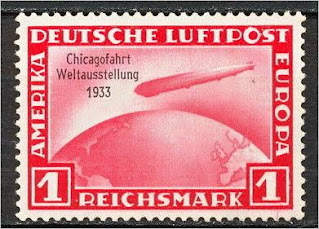






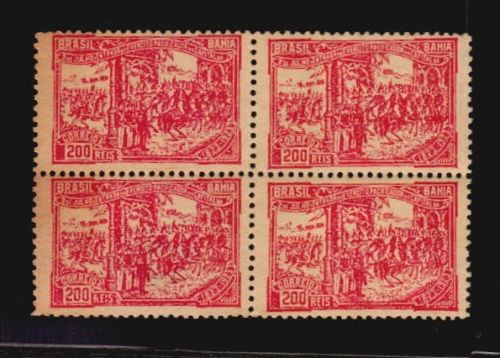





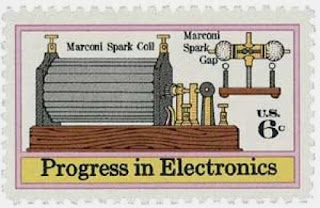
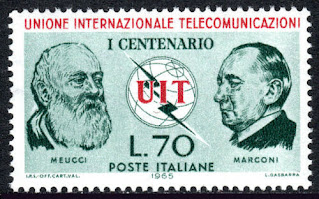






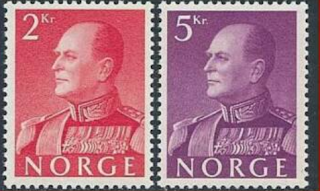


No comments:
Post a Comment